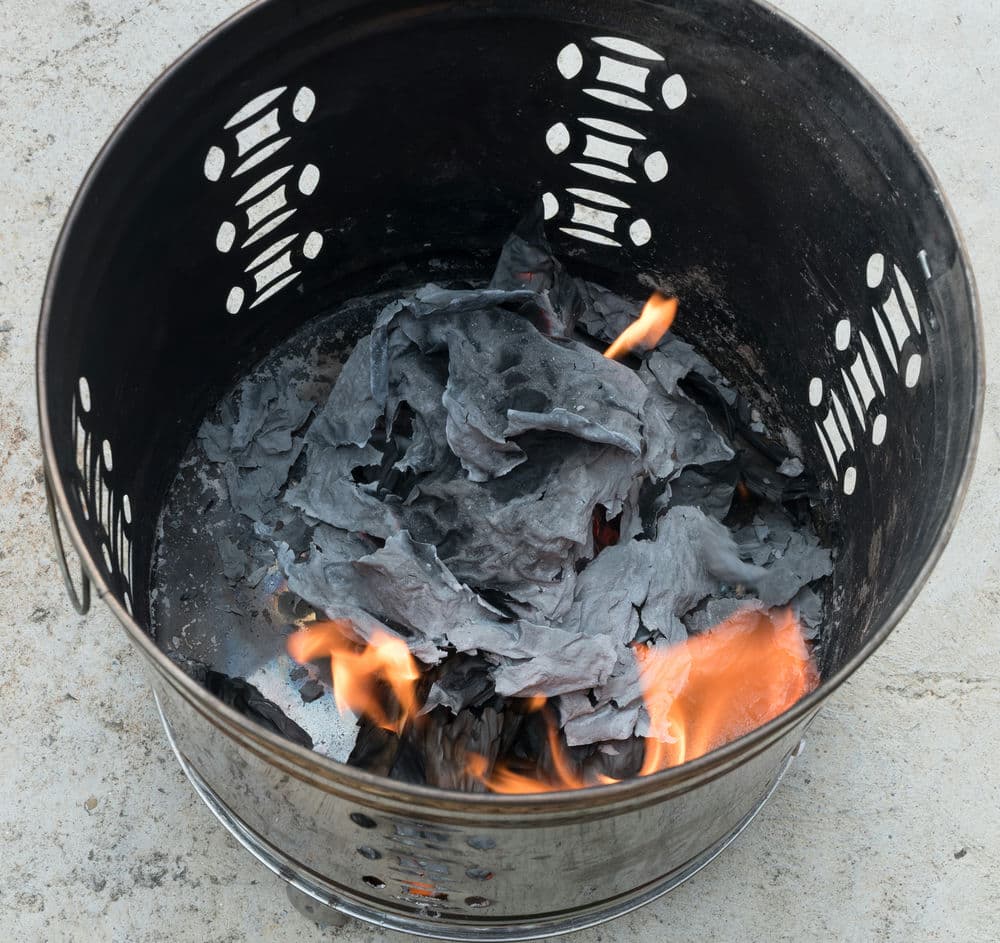
In this article, we'll cover everything you need to know about Ghost Money, its origins, cultural significance, and how it's used today. Our goal is to provide you with a complete understanding of this fascinating concept, and to help you differentiate between fact and fiction.
What is Ghost Money?
Ghost Money, also known as Hell Bank Notes, is a form of joss paper that's burned in traditional Chinese funerals and ancestor worship ceremonies. It's believed that burning this paper will send the money to the deceased in the afterlife, and thus help them in the spiritual realm. These notes are often adorned with images of deities, such as the Jade Emperor, or the City God, and come in various denominations, ranging from small coins to large banknotes.
The Origin of Ghost Money:
The use of Ghost Money can be traced back to the Han dynasty, where it was used as a way to bribe officials in the afterlife. The concept of burning paper offerings has its roots in Taoism, where it's believed that the smoke carries the offerings to the spiritual realm. However, it wasn't until the Tang dynasty that the practice became widespread.
In the early days, Ghost Money was made from plain white paper, but as time passed, it evolved to become more elaborate. Today, Hell Bank Notes come in a variety of designs, ranging from traditional Chinese motifs to modern images of luxury goods such as cars and smartphones.
Cultural Significance:
The burning of Ghost Money is an integral part of Chinese culture, and is performed during the Qingming Festival (Tomb Sweeping Day), the Hungry Ghost Festival, and other important ancestral worship ceremonies. It's believed that burning this paper will appease the spirits of the deceased, and help them in their journey to the afterlife.
In addition to its cultural significance, Ghost Money is also an important part of the Chinese economy. The production and sale of Hell Bank Notes is a thriving industry, with many companies specializing in the manufacture of these paper offerings.
Misconceptions:
Despite its importance in Chinese culture, Ghost Money is often misunderstood by outsiders. One common misconception is that it's used as real money in the afterlife. In reality, Ghost Money is simply a representation of money, and has no practical value in the physical or spiritual world.
Another misconception is that burning Ghost Money is wasteful and harmful to the environment. While it's true that the burning of paper offerings can produce smoke and contribute to air pollution, there are eco-friendly alternatives, such as electronic offerings, that are gaining popularity in modern times.
Conclusion:
In conclusion, Ghost Money is a complex and fascinating concept that's deeply rooted in Chinese culture. While it may be misunderstood by outsiders, its cultural significance and economic importance cannot be denied. We hope that this guide has provided you with a better understanding of Ghost Money, and has helped to dispel some common misconceptions. here to edit.
What is Ghost Money?
Ghost Money, also known as Hell Bank Notes, is a form of joss paper that's burned in traditional Chinese funerals and ancestor worship ceremonies. It's believed that burning this paper will send the money to the deceased in the afterlife, and thus help them in the spiritual realm. These notes are often adorned with images of deities, such as the Jade Emperor, or the City God, and come in various denominations, ranging from small coins to large banknotes.
The Origin of Ghost Money:
The use of Ghost Money can be traced back to the Han dynasty, where it was used as a way to bribe officials in the afterlife. The concept of burning paper offerings has its roots in Taoism, where it's believed that the smoke carries the offerings to the spiritual realm. However, it wasn't until the Tang dynasty that the practice became widespread.
In the early days, Ghost Money was made from plain white paper, but as time passed, it evolved to become more elaborate. Today, Hell Bank Notes come in a variety of designs, ranging from traditional Chinese motifs to modern images of luxury goods such as cars and smartphones.
Cultural Significance:
The burning of Ghost Money is an integral part of Chinese culture, and is performed during the Qingming Festival (Tomb Sweeping Day), the Hungry Ghost Festival, and other important ancestral worship ceremonies. It's believed that burning this paper will appease the spirits of the deceased, and help them in their journey to the afterlife.
In addition to its cultural significance, Ghost Money is also an important part of the Chinese economy. The production and sale of Hell Bank Notes is a thriving industry, with many companies specializing in the manufacture of these paper offerings.
Misconceptions:
Despite its importance in Chinese culture, Ghost Money is often misunderstood by outsiders. One common misconception is that it's used as real money in the afterlife. In reality, Ghost Money is simply a representation of money, and has no practical value in the physical or spiritual world.
Another misconception is that burning Ghost Money is wasteful and harmful to the environment. While it's true that the burning of paper offerings can produce smoke and contribute to air pollution, there are eco-friendly alternatives, such as electronic offerings, that are gaining popularity in modern times.
Conclusion:
In conclusion, Ghost Money is a complex and fascinating concept that's deeply rooted in Chinese culture. While it may be misunderstood by outsiders, its cultural significance and economic importance cannot be denied. We hope that this guide has provided you with a better understanding of Ghost Money, and has helped to dispel some common misconceptions. here to edit.




 RSS Feed
RSS Feed
